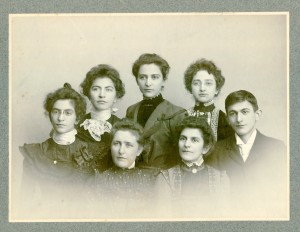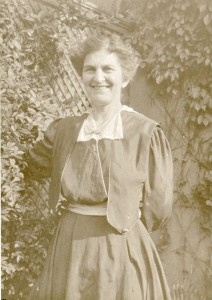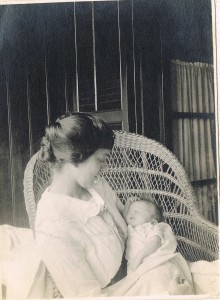At the moment, there are over two hundred letters on my dining room table. They are old letters, their envelopes yellowed and brittle. Fortunately, the pages which they have been protecting all these decades are still crisp and pliable – clearly offering their words in a meticulous, inviting script.
These letters were written from 1914-1926 by my husband’s grandmother, Helena Schlichter, who maintained a steady and faithful correspondence over those years with her mother, Louisa Ottens. Most of the letters are written after Helena’s marriage to Alfred Schlichter. The adventuresome newly-weds would end up far from home, but Helena’s mother was kept very much in her life through detailed and frequent letters. They always begin “Dearest Mother,” and are signed “Helen” – so, I will refer to Helena as Helen.
I have stacked her letters in piles sorted by year – the oldest having been written in 1914 when Helen was a teenager. The 1919 pile is the tallest and I will soon be reading into it and finding out why she had so much to say in that year. It is the year she arrived in China as a Christian missionary, and it is the year her first child was born – so let me guess…
I have my notebooks ready. I decided to take notes by hand rather than sit next to a computer as I read the letters. Handwork seems more connecting. I put some effort into finding notebooks with a quality of paper I will enjoy writing on – with lines which are not too dark. I’ll be using a mechanical pencil because I like the slip of graphite on paper. I feel like an artist getting ready to fill a canvas as I begin to move through Helen’s letters, one by one.
My goal is to create a representation of the story that lies in these pages. There is a process here, as there is in painting a landscape, or a portrait, in which much of the detail confronting you must be left out. The trick is to determine where the essence is, how to arrange it, how to interpret the hues.
My first task is to just read and marvel as portions of Helen’s life unfold through over a decade of articulate, long, reflective and detailed discourse with her mother. These are letters of familial love, religious passion, foreign adventure, domestic joys, fabric swatches, recipes, motherhood, lots of photographs and theological tracts.
I hope lots of friends and relatives join me as I “blog” through discovery and reflection along the way.
For the next chronological entry – scroll to the bottom.







